Debunking Shits About Evolution - Episode 4 [Missing Links And Transitional Fossils]
INTRODUCTION
What if I told you that humans never evolved from all these Ape-like hominid species we have been made to believe all these while, would you believe me? Okay I know you would have reservations in believing that – me too. But have we been able to trace our direct evolutionary tree from the earliest hominid species down to the extant modern human with precision and accuracy? Well, like I’ve said before, the concept of evolution is one that heavily relies on the theories accumulated from the analysis of; majorly; fossils to point us to the right direction. But the question is; have we been able to get every of the fossils to fit into the evolutionary puzzle that would lead us to draw a straight-up graph of our evolutionary tree? You all know the answer is definitely a “no”, and this forms the basis of what is known as “Missing Link”. Length alert: This post is somewhat lengthy, but if you can survive the length, then you would have a broader knowledge of missing link.
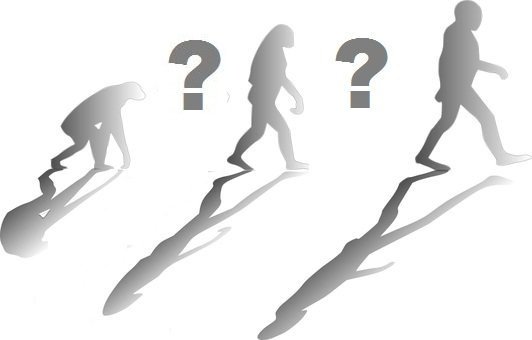
Like we may have already known, every individual life existing in this present time (animal and plant alike) came from common ancestry, and have evolved through billions of years to this extant form. And this can be evidenced from so many examples – Like Comparative Embryology. If you’ve taken time to compare animals; for example; at the embryonic stage, you would agree with me that they all look alike – with tail, gill slit, et al (and that includes the embryo of humans). What does this tell you? Very simple: this is a pointer to common ancestry. Then the gill slit could only point to the fact that the origin of life could be traceable to the bottom of the sea – just in affirmation to what was revealed by Charles Darwin in his book; Origin of species. But for the purpose of this article, we would only focus on the part that concerns human evolution.
Before we continue, it is worthwhile to state here that the concept of evolution is regarded as “scientific fact”. That means; the inferences are drawn from the observation and analysis of related data (which; at the point of analysis; has been proven to be true), but this does not also mean that it can’t be debunked later when you present a counter fact. And also, tracing the evolutionary tree of man has remained one of the hardest parts of human evolution. You will find out the reasons pretty soon. Okay let’s go straight to the main subject of discourse.
MISSING LINK AND TRANSITIONAL FOSSILS
Maybe I’ll start by giving this little example: all these while, we have been made to believe that the Neanderthal man (Homo sapiens neanderthalensis) was a direct parent of the modern man. But on recent analysis of fossils, it was discovered that the Homo sapiens and the Neanderthals; at some point in the recent past; co-existed [ref]. If we ever co-existed, that means, it is practically impossible for them to have evolved into us. This also infers that they are just side arms to the evolutionary tree of man, and didn’t even form the main stem.
Asides the Neanderthals, the normal trend of evolution that we may have known all these while; even in high school; is – ”From Homo habilis (handy man; man with ability), to Homo erectus (upright man), then to Homo sapiens (thinking man)” But have you stopped for once to think that there could be some missing species in-between these aforementioned species? Maybe this would interest you; the Cro-Magnon man; though not much mentioned; has been proven to have some unique similarities with the modern humans. No wonder some have considered it as the last significant specie prior to the emergence of the modern humans [ref]. huh!! So the Homo sapiens might have gone through the Cro-Magnon man before arriving at the Homo sapiens sapiens (modern man). That means; the Cro-Magnon can be regarded as transitional fossil.
But wassup with transitional fossil? I’ll try to break this down in a layman’s term. Let’s assume that the extant human species is represented by letter “Z”. Then let’s use letter “A” to represent the Sahelanthropus species (the earliest Ape-men). But from A to Z, there are some letters in-between, and you can’t get to Z without passing through these letters. When any of the letters are missing, you can’t get a straight-up link from A to Z – so we call these gaps “missing links”. But as some letters are discovered to bridge the perceived gaps, then the discovered letters are known as “transitional fossils”
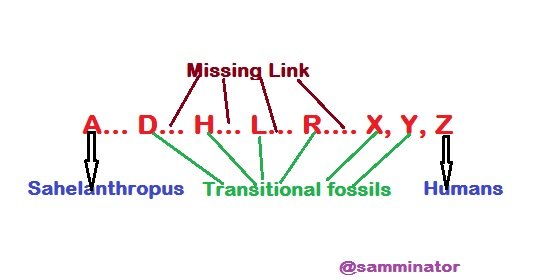
So transitional fossils are just the fossils that form a connection or to bridge the perceived gaps between ancestors of an organism (ancient hominid species; in this context) and the extant organisms (humans). And since these fossils are spread across various parts of the earth, more discoveries would be occurring every now and then. Maybe you need to take this example too.
I’m sure you may have heard of the recently discovered Homo naledi (for those familiar with archeology and paleontology), but there are some mysteries, so to say, relating to species. First of all; their cranial structure indicates that they have an almost equal brain size; maybe slightly smaller; to the extant humans. But the markings and toolkits that were exhumed together with the fossil bones indicated that they had some extremely advanced creative acumen, which can only point to the fact that they had complex brain structure and brain power.
Okay, with these kinds of complexities, where do you hope to fix this specie in the evolutionary tree of man? But on carbon-dating, it was discovered that this specie existed at various eras in the evolutionary trail – some were carbon-dated to about 1million years ago [ref], while some sources have said that they are only 250,000 years old [ref]. That means; it may not also form part of our direct parent. Because, by 300,000 years ago, the Homo sapiens have started evolving – of which root can be traced to Africa. That is the reason Homo naledi has been termed “mystery species”. And the “naledi” in the name suggest the fact that it was discovered around the Empire cave of Africa (which is also called “Rising star”), and also translates to Dinaledi.
With the discovery of the Homo naledi, paleontologists have drawn another conclusion that the Homo neanderthalensis is not the only side arm in the evolutionary tree of man – many other side arms abound. By “side arm” – I mean; the hominid species that didn’t evolve directly or formed part of the linage of modern man. Maybe they simple died out, or they trailed a different path to their extant species.
THE MISSING PIECES
Now some may ask; how close are we to discover the matching pieces that would provide the detailed evolutionary pathway from the ancestors of modern man to us in this present time? But I would like to remind us this: Rationally and logically thinking; the ancient hominid species didn’t just exist in a particular location, but are spread throughout the whole earth. That means; for you to get every of the transitional fossils to fill up the missing link, you need to excavate the whole earth – how possible is this? Now, considering the fact that some of the fossils have been destroyed by natural factors – like volcanoes et al, so it would create a perpetual flaw in the evolutionary tree of man.
Take for example; the Java man (Homo erectus erectus) I’m sure you know why I used “erectus” twice? It’s not tautology, but this shows it’s a subspecie of the Homo erectus. These species are called “Java man” because they were discovered in Java, Indonesia. Imagine if the Island of Java was hit by a massive volcanic eruption that destroyed all the fossils of the Homo erectus erectus, that means, there would be a void in the evolutionary tree of man. But the truth is; since we’ve not yet discovered all of the transitional fossils, then the missing links would still remain in the evolutionary tree of man.
But notwithstanding, there are some fossils that are largely indispensible when trailing the evolution of man. Like the Homo erectus spp I once mentioned. How would we have discovered the adaptative features of our ancestors that initiated “uprightness” if the Homo erectus wasn’t discovered? You all know that the Homo erectus marks a major breakthrough in the ability of man to be fully erect and upright. But we never knew which species initiated this until the discovery of the Homo erectus – which is indicated in their pretty long femur bone (just like ours), a hip bone that suggests uprightness, and a knee angle that would support both bipedalism and uprightness; as indicated in the image below.
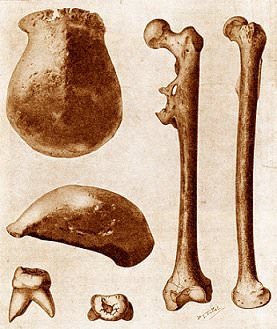
At least, we’ve known the specie that initiated the uprightness (i.e. being fully erect), but what about the species that initiated the bipedalism (walking on just two legs)? The earliest of the Apes walked on all fours right? But at what point where their hands freed from supporting locomotion? This is where another missing link comes into play. Though assumptions have remotely queried the Sahelanthropus, because of their shift from the arboreal-dwelling to land-dwelling. But some of the fossils of the Sahelanthropus still indicated curved spine. That means; they could have occasionally used their hands as support for locomotion. The Australopithecus has also been inferred to be bipedal – yes, their fossils suggests that, but were they the species to initiate bipedalism? Now you see why more transitional fossils need to be discovered to fill up these perceived gaps.
FINAL WORDS
The evolution of man is not a concept that can be gotten from the press of a button, but the systematical study of related fossils, and drawing inferences from them. But discovering these fossils have not been easy either, and this is the reason there have been perceived gaps in the evolutionary tree of man – maybe you don’t even know there are gap; but there are… and these gaps are what is referred to as “Missing links”. So not until more transitional fossils are discovered, we may never succeed in trailing; with precision; the evolutionary pathway of the modern humans.
Thanks for reading
References for further reading
- humanorigins/evidences of human-fossils
- Extinct hominid species
- The first humans
- Homo erectus - features, and adaptation
- Becoming human - sahelanthropus tchadensis
- The appearance of the early modern Homo sapiens
- Uprightness in man - Homo erectus
- Concept of missing link
- Fossils of the australopithecus
- Evolution of man
- Exisitence of Homo naledi
- 250,000years old Homo naledi
All images are CC Licensed and are linked to their sources. With the exception of the one created by me
gif by @foundation
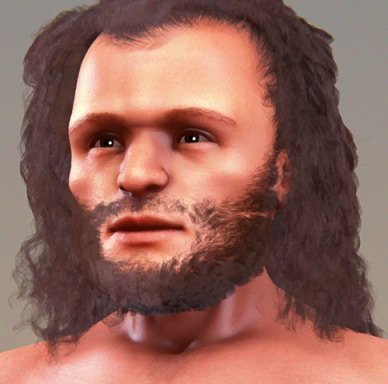
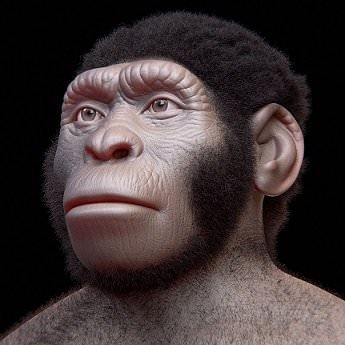
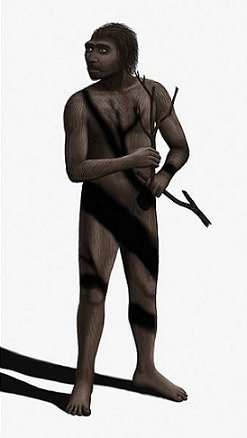


My orientation about evolution is been reshaped... I hope I don't loose myself too fast
I would visit some do the reference, this is so informative and I missed previous episodes.
Lol. That's actually the idea; to reshape people's orientation about evolution and to clear off the misconceptions about evolution.
Thanks for coming bro
Funnily enough, I discussed evolution with my big one recently. I am confident that one day, we will be able to connect all the dots. Things have improved by a lot during the last 10-15 years and they will continue. New discoveries, more knowledge, etc.
I apologize for not having read your blog more often recently. For my defense, I was busy with many many things on the side ;)
Thanks a lot for coming around sir.
That could mean excavating the whole earth in search of transitional fossils to fit into the perceived gaps. This is because, we don't exactly have the direct location of where all our ancestral hominid species lived in. Even if you do, there's a possibility that some of the fossils may have even been destroyed.
Though, with time, things would become clearer, and we'll have an idea of how and what humans really evolved from.
But as for me, I'm open for surprises.
I understand sir, and I salute you for coming around, even with your busy schedules.
Once in a while, when I take the time to check my feed (now you will be part of it... for some reason, I as not following you but this is fixed...) ;)
Thanks a lot sir. I'm really honoured by this. I won't abuse the privileges.
This post has been voted on by the SteemSTEM curation team and voting trail in collaboration with @utopian-io and @curie.
If you appreciate the work we are doing then consider voting all three projects for witness by selecting stem.witness, utopian-io and curie!
For additional information please join us on the SteemSTEM discord and to get to know the rest of the community!
Hi @samminator!
Your post was upvoted by Utopian.io in cooperation with @steemstem - supporting knowledge, innovation and technological advancement on the Steem Blockchain.
Contribute to Open Source with utopian.io
Learn how to contribute on our website and join the new open source economy.
Want to chat? Join the Utopian Community on Discord https://discord.gg/h52nFrV